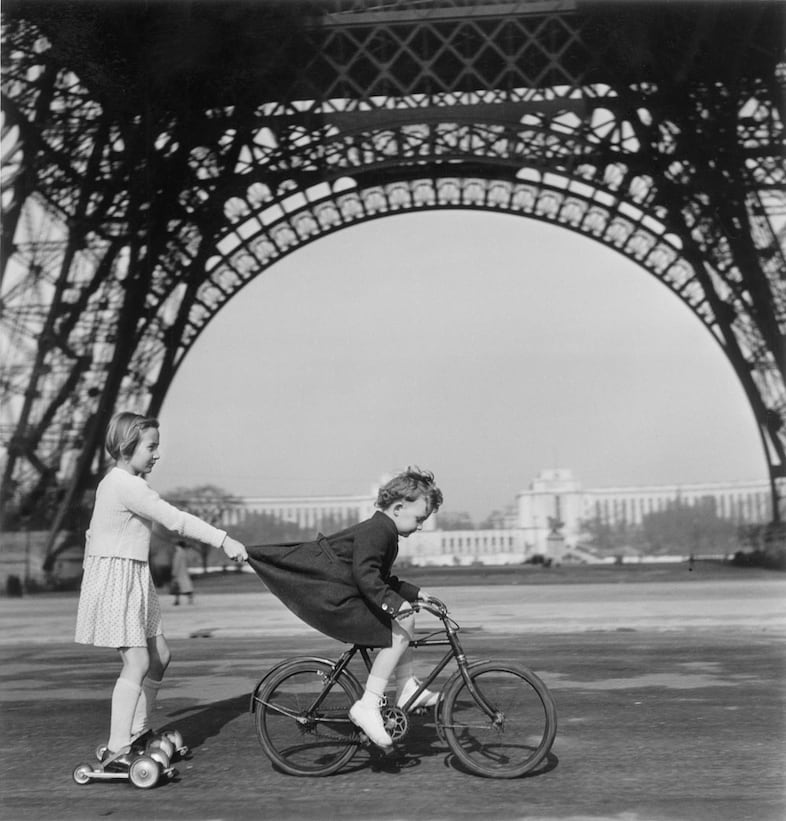The artist that I want to take inspiration from is Robert Doiseneau, who uses his photography to capture moments of humanity in his subjects. His photos often have a special kind of charm and poetry to them, ranging from whimsical to ponderous, and all of them show the vivacity of life. Even without any sort of color, they can still portray vivid scenes with heart, which is something that I want to figure out how to do. Thus, I will be analyzing some key traits of Doiseneau’s photographs.
The first and most noticeable feature of Doiseneau’s street photography is that they all have human subjects. This is definitely one part of what gives these images their iconic sense of human connection, as you wouldn’t be able to connect with other people if there are no other people around.
Here are some examples of his photos:



Another key feature of his photos is that he doesn’t just photograph his subjects; he incorporates their environments and surroundings into his photos too. This may seem like an obvious thing to do, but the backgrounds and sometimes foregrounds in Doiseneau’s photographs always add something more to the photo – whether it’s providing context for the actions of the subject (like how the shiny floor provides the context of rain for the photo of the man holding an umbrella), by drawing attention to the subjects (such as the negative space in the photo of the two children, or the blurred crowds in the photo of the two people kissing), or adding general atmosphere and emotion (which is present in all of the photos – the people in the rain evokes thought and interest; the bright openness of the children playing creates a sense of childlike innocence and freedom; the blurred crowds almost feels like the viewer is seeing the photo from the perspective of the couple as if the only people that matters in that moment is each other; and the sprawling and cluttered buildings in the final image adds to the atmosphere of the city, and makes the children feel small facing a wide world). Overall, the backgrounds are never just “an environment that the subject happens to be in”, but are always something that is integral to the photograph itself, just as much as the subject.
Something else that seems to be consistent across these photographs is that there is always at least one main subject that is showing their face. Doiseneau’s photos rarely consist of only silhouettes of people from the back, and being able to see the face of at least one subject is definitely something that adds emotion to the piece, whether positive, negative, or neutral. These photos also generally feature a wide range of values, which is made more noticeable by the fact that the photos are all taken in black and white. These different values create depth in the image, often by creating separations between different parts of the image (such as the sky vs the people), and creates more visual dynamics and interest as well. Overall, Doiseneau’s photographs are clearly taken with great amounts of intent, and his style of photography is very emotional and thought-provoking.

Leave a Reply
You must be logged in to post a comment.